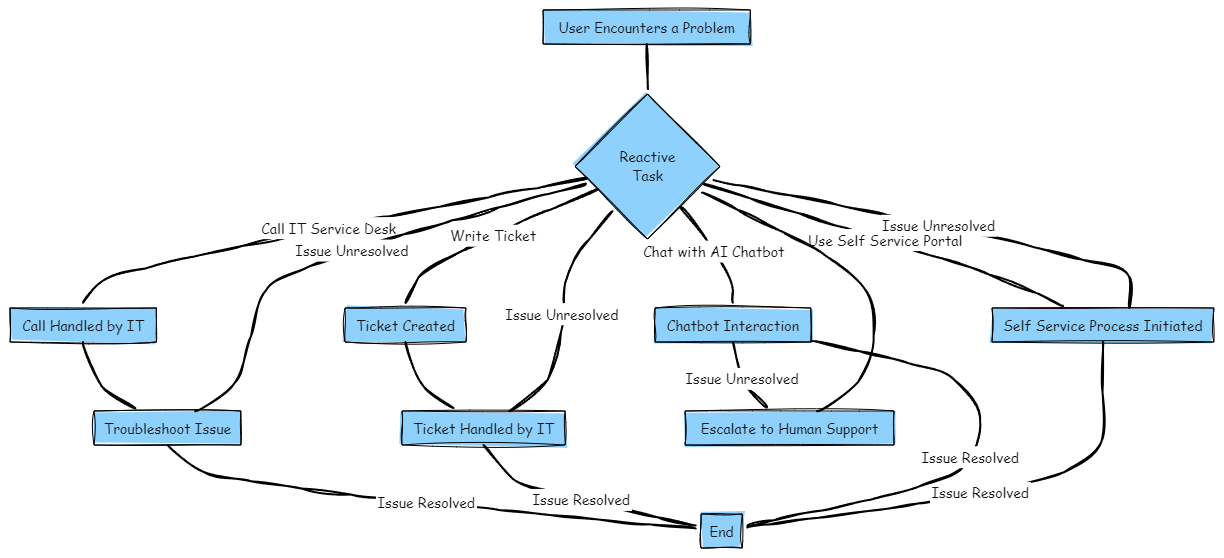Proactive vs. Reactive IT Management: Unlocking Hidden Potential for IT and MSP Providers
Over 2 decades reactive IT-Workforce
in the constantly evolving world of IT and Managed Service Providers (MSPs), companies face new challenges every day. One of the central questions is how IT support and management are organized.
Reactive Support and Management:
Traditionally, many IT support and management systems operate reactively. This means they respond to problems only after they have occurred. A typical scenario for reactive support is when IT support intervenes only after a user reports an issue – whether by creating a ticket, making a call, or using a chatbot.
The disadvantages of reactive support and management are clear:
- Long response times: Users often have to wait for their issues to be resolved.
- High workload for IT teams: IT staff are constantly dealing with acute problems, making strategic planning difficult.
- User dissatisfaction: Delays and recurring problems lead to frustration among users.
- Limited efficiency: IT management has little visibility into potential issues, making it difficult to plan and prioritize effectively.

Proactive Support and Management:
In contrast, proactive support and management aim to identify and resolve issues before they affect the user. Continuous monitoring and predictive analysis allow potential problems to be detected and addressed early. IT management also benefits from a proactive approach, as it provides better visibility and control over the IT infrastructure.
The advantages of proactive support and management:
- Improved user satisfaction: Issues are resolved before they affect users.
- Reduced workload for IT teams: Early detection and resolution of issues allow IT teams to work more strategically.
- Better planning and prioritization: IT management has better visibility into the IT infrastructure and can prioritize issues before they become critical.
- Increased efficiency: By reducing downtime and optimizing IT processes, overall business efficiency is enhanced.

Preventive Support and Management:
Taking it a step further, preventive support involves predictive analysis and resolution of potential future issues before they occur. By leveraging advanced technologies like artificial intelligence (AI), data science and machine learning (ML), IT teams can identify potential vulnerabilities and take preventive measures.
The advantages of preventive support and management:
- Maximum availability: Addressing potential issues in advance maximizes the availability of IT systems.
- Proactive measures: IT teams can work proactively instead of constantly reacting to issues.
- Reduced downtime: Preventive measures minimize the risk of system failures and disruptions.
- Strategic focus: IT management can concentrate on long-term strategic goals rather than constantly reacting to acute problems.
Summary: Transitioning from a reactive to a proactive or even preventive approach in IT support and management offers tremendous potential. Companies can not only enhance the efficiency and satisfaction of their users but also maximize the overall performance and availability of their IT systems.
GDPR Compliance:
- No collection of personal data: No personal data is collected, ensuring user privacy.
- German data center: All data is stored and processed in a German data center, adhering to the highest security and data protection standards.
Are these benefits and solutions interesting for your company? Would you like to try these innovative approaches in a Proof of Concept (PoC) or Proof of Value (PoV)?
Contact us to learn more and schedule a meeting. Let's elevate the efficiency and quality of your IT support and management to the next level! Made in Germany.


